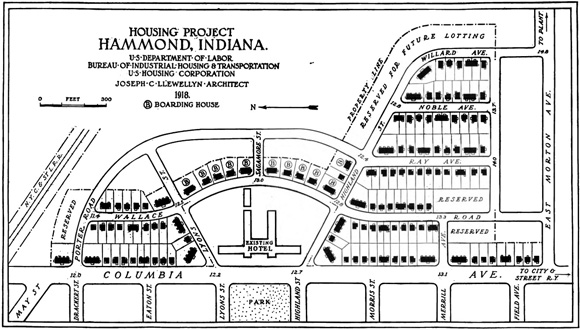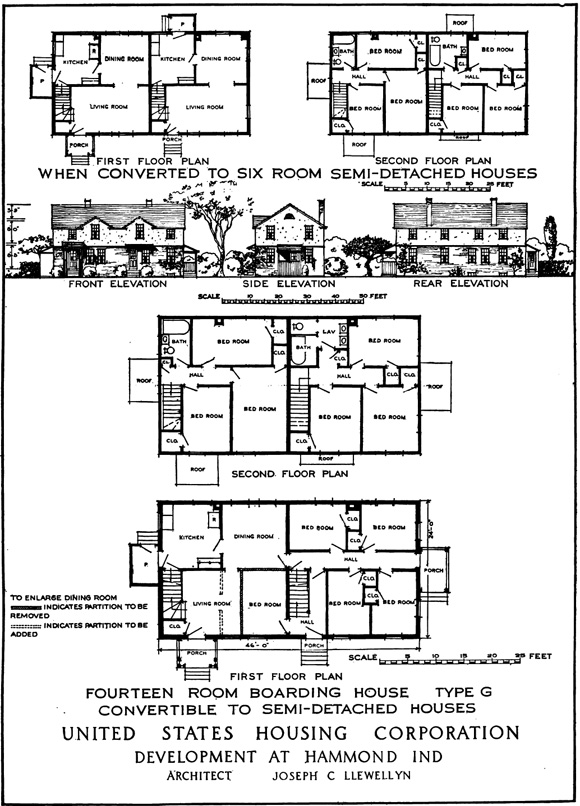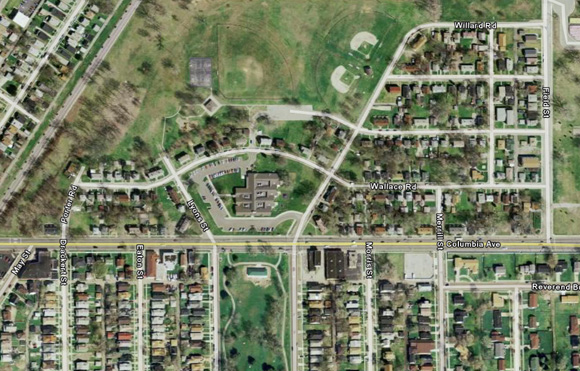Hammond, IN
General Description (1919 report):
"Hammond, Ind., is in the center of a large manufacturing district, including the steel town of Gary, and East Chicago, Whiting, Holliston, etc. There are no visible lines of demarkation between these northern Indiana and adjacent Illinois towns, in fact the sanitary and utility problems are very closely united. The population within the corporate limits of Hammond was approximately 30,000 in 1918. There is a very large foreign element in the population."
"The United States Housing Corporation was instrumental in making several improvements in transportation in the Hammond District. A special train was put into operation on the "Nickle Plate" Railroad between the Standard Steel Car Co. Plant and Englewood, Chicago..."
"There were no particular problems, for the time being, in housing the common labor of the foreign type, who were quite willing and even preferred to live in the cheaper type of buildings, such as barracks or tar-paper shacks of their own construction. The difficulty was to meet the more serious problem of providing a home and living quarters for skilled mechanics of a higher grade."

1919 excerpt describing the design of the Hammond Site:
Area Planned: 19.55 acres. Housing planned and constructed: Detached houses, 86 families, 7 of these being in boarding houses; semidetached houses, 36 families, 4 of these being in the boarding houses convertible into two semidetached dwellings each; row houses, 52 families. Total, 174 families. 78 single persons housed in boarding houses.
"The first impression one gets of this project is its sombreness, due to the fact that all the wood-covered houses are stained gray instead of being painted in the colors generally applied to clapboards. All the roofs, too, are of one color --green--this covering being asphalt shingles. There are a few red brick houses, but even these as well as the white trim of the houses do not greatly improve the dullness of the effect as a whole. A great improvement would result if color were introduced."
"The project has not been rigidly subjected to the rulings of the War Industries Board, for here we have window-box details of good construction, and a good quality of trim and flooring, and cold-air returns to the furnaces covered with metal register faces instead of the comparatively flimsy wood lattices used elsewhere.
"The exterior design of thse houses is exceedingly simple, the cornices and overhangs of roofs and porches being sufficient, yet not too heavy. The windows as a rule are larger than is usually found in houses of this type, giving the rooms a maximum of light and ventilation. Kitchens and living rooms are of a good size, the fixtures being well placed and not the least cramped. The general aspect of the houses on the long streets is pleasing, especially the variety introduced by the curving streets."
The Hammond Site Today
Rendering, 1919

